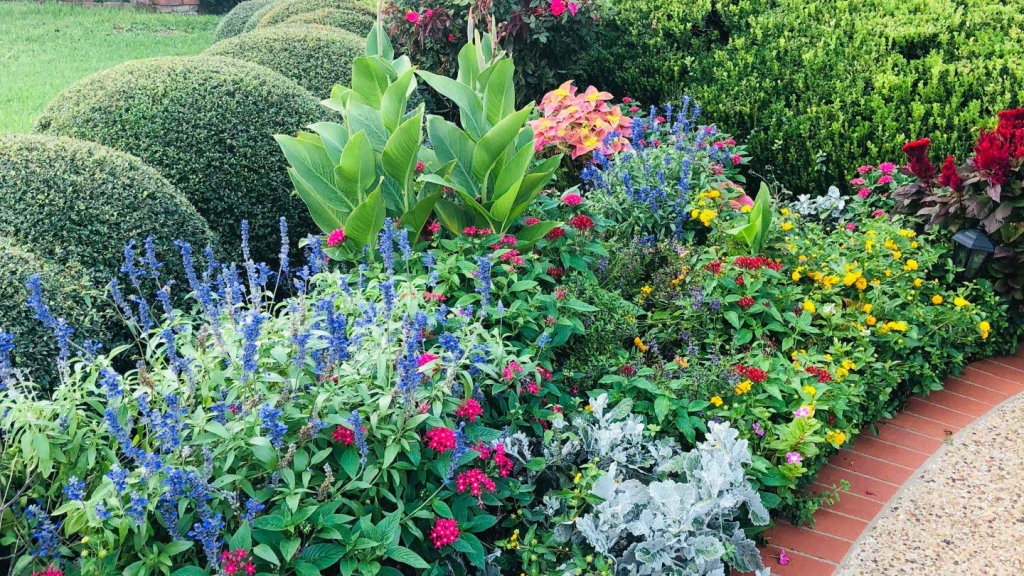Texas summers can be brutal, with soaring temperatures, intense sun, and minimal rainfall. However, if you have a garden filled with Texas native plants, you’re in luck. These plants are naturally adapted to the harsh conditions, making them more resilient and drought-tolerant than many non-native species. Still, proper care is essential to help them thrive throughout the summer. Here’s how you can care for your Texas native plants and ensure they stay healthy during the scorching summer months.
Native plants are adapted to thrive with less water, but they still need hydration, especially in extreme heat. The key to watering Texas native plants is consistency and moderation. During the summer months, it’s important to establish a watering schedule that allows the soil to dry out between waterings. Over-watering can lead to root rot, so aim to water deeply but infrequently.
Best Practices for Watering:
Water in the early morning or late evening to prevent water loss from evaporation.
Use a soaker hose or drip irrigation system to deliver water directly to the roots, minimizing water waste and preventing fungal diseases.
Check the soil before watering. If the soil feels dry a few inches down, it’s time to water. If it’s still moist, hold off for another day or two.
Texas summers can quickly dry out the soil, leading to stressed plants. One of the best ways to combat this is by applying a layer of mulch around your native plants. Mulch helps retain moisture, insulates the soil to regulate temperature, and suppresses weeds that compete for water and nutrients.
Choosing the Right Mulch:
Organic mulches like shredded bark, wood chips, or compost are ideal because they break down over time, enriching the soil.
Apply a 2-3 inch layer of mulch around your plants, but be sure to keep it away from the base of the plants to avoid potential rot.
Texas native plants generally require minimal pruning, but regular maintenance will keep them looking their best throughout the summer. Deadheading, or removing spent flowers, helps prevent the plant from wasting energy on seed production and encourages new growth.
Prune any dead or damaged stems, and cut back overly leggy growth to promote better air circulation. This also helps prevent disease and pests, which thrive in hot and humid conditions.
The intense Texas heat can attract a range of pests, including aphids, grasshoppers, and spider mites. While native plants are typically more resistant to pests than non-natives, it’s still important to keep an eye out for any signs of damage. Early intervention is key to preventing a full infestation.
Common Signs of Pests:
Discolored or spotted leaves
Holes or chewed edges on leaves
Sticky residue (a sign of aphids)
If you notice pest activity, gently wash your plants with a strong stream of water to dislodge insects. If necessary, apply an insecticidal soap or neem oil, but always follow the manufacturer’s instructions to protect beneficial insects like pollinators.
Texas native plants thrive in well-draining soil, which is crucial during the summer when the ground can dry out quickly. Poor drainage leads to waterlogging and root rot, which can harm your plants. To ensure good drainage, make sure your soil consists of a healthy mixture of sand, loam, and organic matter.
If you notice that your soil retains too much moisture, consider adding sand or gravel to improve its texture. Raised beds or planting on mounds can also help prevent water from pooling around the roots.
Texas is a vast state with diverse climates, and different regions have different plant needs. The plants that thrive in the Hill Country may not fare as well in the desert or coastal plains. When selecting native plants for your garden, it’s important to choose varieties suited to your specific location.
Texas Native Plants to Consider for Hot, Dry Summers:
Blackfoot Daisy (Melampodium leucanthum): A hardy perennial that loves full sun and can handle the heat.
Mexican Feathergrass (Nassella tenuissima): This ornamental grass is drought-tolerant and adds texture to your garden.
Texas Sage (Leucophyllum frutescens): Known for its silvery foliage and purple blooms, this shrub is perfect for hot, dry conditions.
While most Texas native plants are adapted to the sun, some, especially young or newly planted specimens, may need some extra protection from the harsh midday heat. You can provide temporary shade using shade cloth, burlap, or even taller plants that can offer some relief during the hottest parts of the day.
Be mindful of how much shade you provide, as many native plants need plenty of sunlight to thrive. Just ensure that they don’t become too stressed by the intense heat.
Texas native plants generally do not require a lot of fertilization, as they are well-adapted to the nutrient-poor soils found in many areas of the state. In fact, over-fertilizing can lead to excessive growth that weakens the plant’s natural resilience.
If you choose to fertilize, use a slow-release, organic fertilizer designed for native plants or a balanced fertilizer with a low nitrogen content. Apply it sparingly and only during the early spring or fall, as fertilizing during the summer can lead to excess growth and attract pests.
Conclusion
Caring for Texas native plants in the summer heat can be a challenge, but with the right knowledge and care, your garden can thrive. By watering wisely, mulching effectively, and providing proper shade and maintenance, you’ll help your plants weather the heat. Choose the right native species for your region, and keep an eye out for pests and diseases. With these simple yet effective strategies, your Texas native plants will not only survive the summer heat—they’ll flourish.



